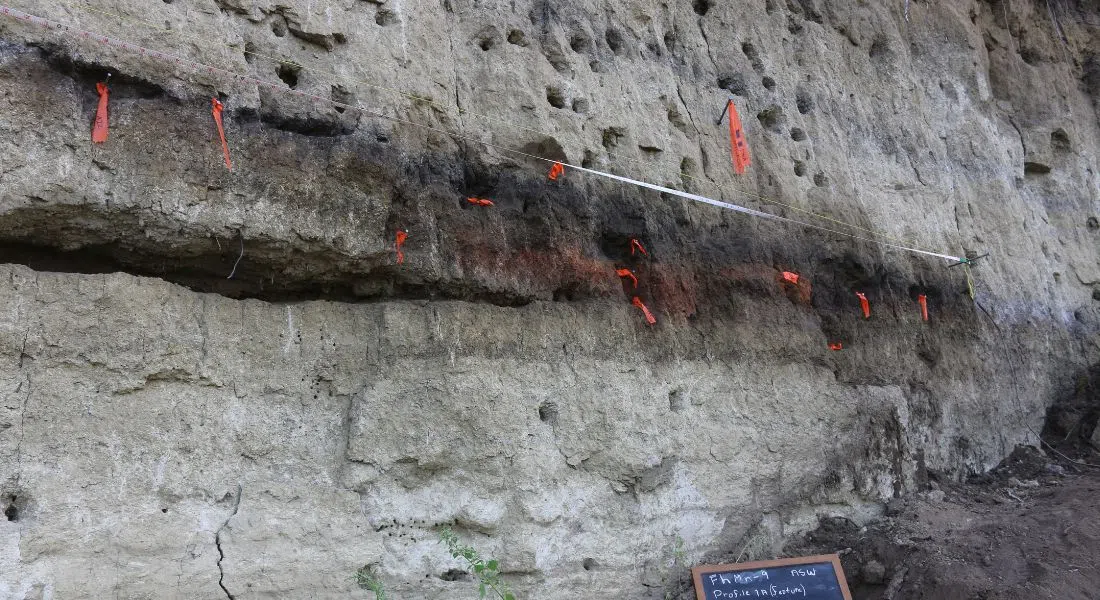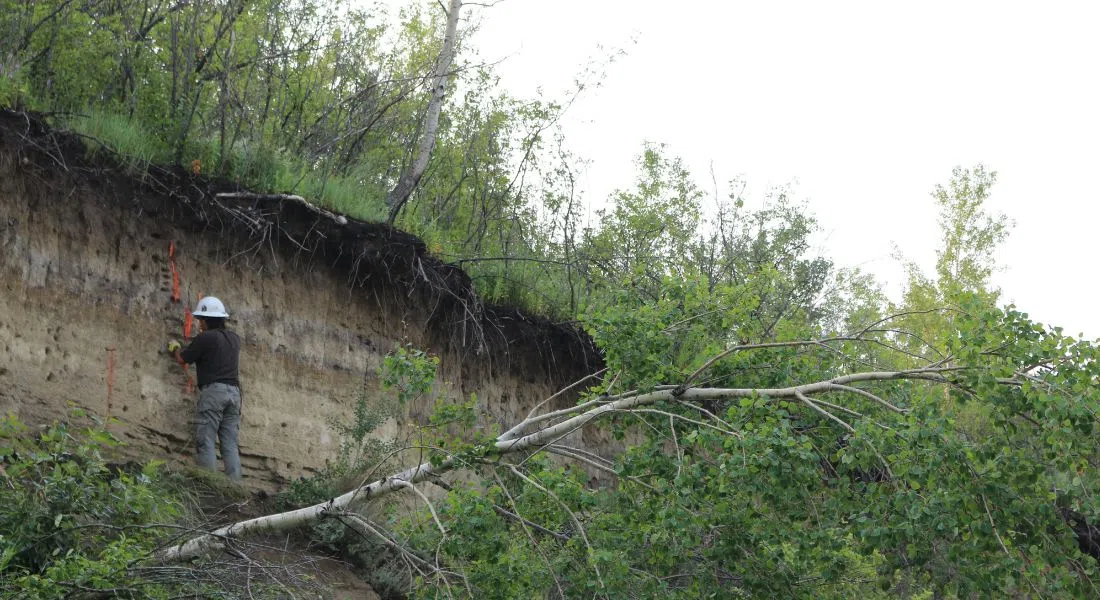A University of Saskatchewan archaeologist says the location of artifacts at a new archaeological dig indicates to him that people were not only going back to that location, literally over thousands of years, but that they were going to the same spots within this location even though there could be hundreds of years between each of the time periods it was occupied. Dr. Glenn Stuart says the site includes, among the tools, artifacts and bone fragments – a very large hearth.
He says it is intriguing and what they are finding reaffirms what Indigenous people have been saying for years, that they have always been here. Dr. Stuart also revealed that it is quite a bit older than Wanuskewin which goes back about 6,000 years. Radiocarbon dating of a piece of charcoal from the hearth dates it to around 10,600 to 10,700 years ago. Dr. Stuart says what the site tells them is that as soon as it was possible, after the ice receded from the ice age for someone to be able to live on the site, they were there.
In a news release Sturgeon Lake First Nation says, “The site provides undeniable proof of the deep and enduring presence of Indigenous peoples in this region, reinforcing knowledge that has been passed down for generations. Oral histories have long described the area as an important cultural and trade hub, and this discovery offers physical evidence supporting those accounts.”
The archaeological site is five kilometres from Prince Albert along the North Saskatchewan River on Sturgeon Lake First Nation. He says researchers and the First Nation want to protect it, but it is in a cutbank and eroding so they need to determine how far it goes back. He suggests that in the process of doing that they can work with Indigenous youth and be part of their land-based learning programs.
Sturgeon Lake First Nation is planning to work towards securing funding for continued research and preservation, as well, plans are underway to establish a cultural interpretive centre.

photo credit: Dr. Glenn Stuart



















